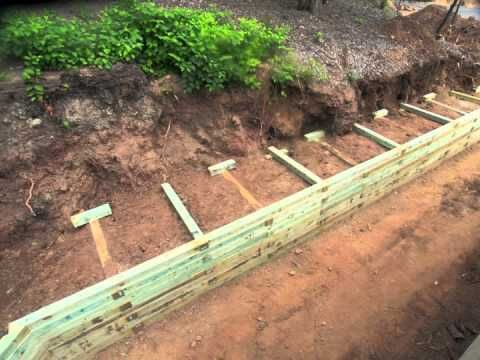jerseyshore
Structural
I haven't seen a new wood tie wall (formerly known as a railroad tie wall) in at least ten years, but just got the possible request to design one out of 6x6's.
I believe the last time my office designed one I was an intern and we used a full crib-style layout (deadmen were continuous for the full length of the wall). I'm pretty sure it was designed as a gravity/MSE wall using the weight of all of the soil area "inside" each crib made up of the deadmen and tiebacks.
I know most RR tie walls are not designed or built like that. Most have shorter deadmen staggered with tiebacks in alternating courses (see example photo below). Much less digging required this way.
So my question is does anyone have any resources or methods to design these things? Does that gravity/ MSE method even work if it was a full crib?

I believe the last time my office designed one I was an intern and we used a full crib-style layout (deadmen were continuous for the full length of the wall). I'm pretty sure it was designed as a gravity/MSE wall using the weight of all of the soil area "inside" each crib made up of the deadmen and tiebacks.
I know most RR tie walls are not designed or built like that. Most have shorter deadmen staggered with tiebacks in alternating courses (see example photo below). Much less digging required this way.
So my question is does anyone have any resources or methods to design these things? Does that gravity/ MSE method even work if it was a full crib?

